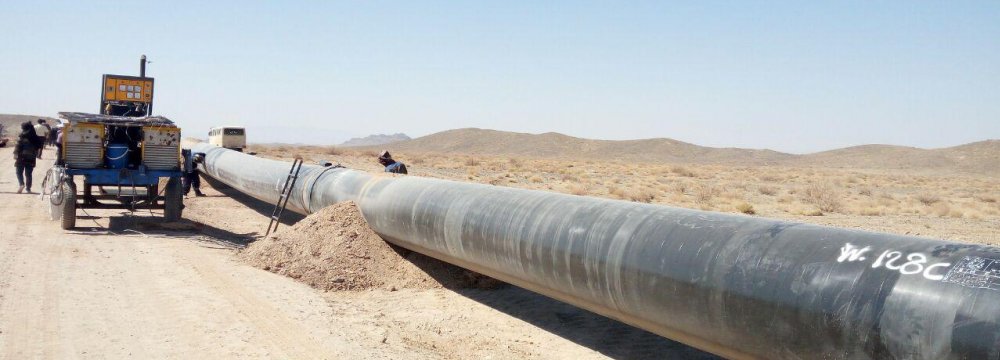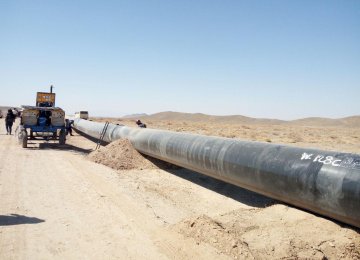In line with plans to raise the export of oil products from southern terminals, the flow of oil derivative in some pipelines, which are used to transfer the products from south to central and northern regions, has been reversed, the deputy head of Iranian Oil Pipeline and Telecommunications Company said.
“As natural gas supply to power plants has sharply reduced the consumption of mazut and diesel in power stations, the 'flow reversal' operation on Shazand Refinery pipeline from Arak [Markazi Province] to the city of Abadan [Khuzestan Province] has been carried out successfully,” Dariush Amirsardari Goudarzi was also quoted as saying by Shana on Monday.
Pointing to ongoing operations, Goudarzi said, "The 10-inch Tehran-Abadan pipeline and the 16-inch Isfahan pipeline have also undergone reverse-flow modifications and oil derivatives have been directed toward southern oil terminals."
According to the official, the construction of new pipelines to transfer oil products to southern oil terminals tops the IOPTC agenda because "this approach has always had priority over other means of supply, such as tanker trucks".
"Crude oil pipelines are operating at full capacity and almost 80% of the capacity of pipelines used for transferring oil derivatives is being used," Goudarzi said, adding that existing pipelines in the Persian Gulf region can carry products from the newly-launched Persian Gulf Star Refinery in Bandar Abbas to select destinations.
"But before the second and third phases of the refinery become operational (by the end of the current fiscal in March 2018), pipelines should be expanded."
Asked about ventures to boost oil transport capacity, he said the development of the Bandar Abbas-Rafsanjan pipeline is a major plan that should gain momentum to increase the supply of oil products, as the production of more gasoline and other products is planned.
Work on the pipeline, which began in 2015, is due to be completed at a cost of $450 million next year. IOPTC is in charge of transporting crude oil and products across the country. It is a subsidiary of the National Iranian Oil Refining and Distribution Company.
In related news, Alireza Rajabpour, deputy for exports and imports at the National Iranian Oil Products Distribution Company, said exporting oil byproducts to neighboring states like Iraq, Armenia, Pakistan and Afghanistan is on the agenda.
Highlighting NIOPDC's policy to reduce export costs, he said, "Regarding the pipelines and other infrastructure such as oil storage facilitates, the closer the storage units to border areas, the lesser will be the expense for exports, which in turn will help curb fuel smuggling."
According to Mansour Riahi, chief executive officer of the National Iranian Oil Products Distribution Company, the annual export of oil products is expected to rise by 200,000 barrels a day to 600,000 barrels by March 2018.
Reportedly, NIOPDC on average exported 400,000 barrels a day, or 64 million liters per day, of oil products to buyers in the Middle and Far East in the fiscal 2015-16.











Add new comment
Read our comment policy before posting your viewpoints